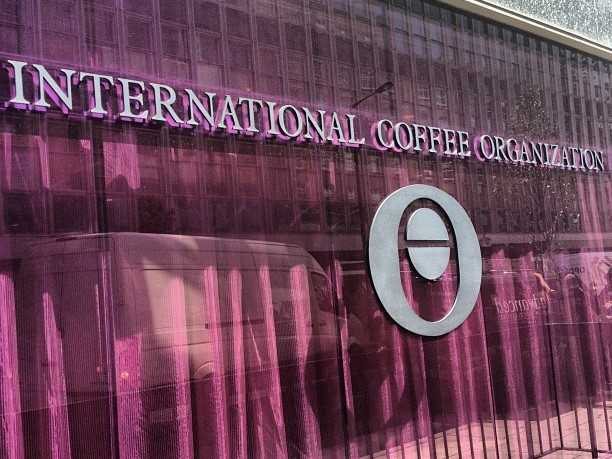LONDON – The ICO composite indicator continued its downward trend that started at the end of August, averaging 124.46 US cents/lb. Prices for all groups fell in September, though Robusta saw the largest decline of 5.1% compared to August.
This brings coffee year 2016/17 to an end, and global production is estimated at 153.9 million bags, a 1.5% increase on 2015/16. With world consumption at 155.1 million bags, this gives a global deficit of 1.2 million bags.
Coffee prices in September continued the downward trend from the end of August through the first week, reaching 120.71 US cents/lb on 6 September.
The ICO composite indicator price then climbed to 128.95 US cents/lb on 18 September. On the following day, coffee prices fell by 2.83 US cents/lb before recovering to 128.01 US cents/lb on 20 September.
Subsequently, coffee prices declined over the next week and a half with the daily price falling to 121.40 US cents/lb on 28 September. As a result of these movements, the average of the ICO composite indicator price fell by 2.9% to 124.46 US cents/lb.
The group indicators all showed declining trends in September despite a small rise in the middle of the month.
All three Arabica groups registered decreases as the average prices for Colombian Milds, Other Milds and Brazilian Naturals fell 2.4%, 2.2% and 1.7%, respectively.
Compared to the Arabica groups, Robusta declined much more significantly in the first week, but did not rise much later in the month. As a result, the monthly average for the Robusta group was 5.1% lower than in August.
The average arbitrage in September, as measured on the New York and London futures markets, increased further by 7% to 46.26 US cents/lb. Meanwhile intra-day volatility of the ICO composite indicator price decreased by 0.3 percentage points to 6.3%.
After two months of decrease, global exports in August remained stable at 9.9 million bags, but were 8.4% less than in August 2016.
However, the volume of exports during the first eleven months of coffee year 2016/17 increased by 5.8% to 113.3 million bags, which is 6.2 million bags higher than during the same period one year ago, when 107.1 million bags were shipped.
Shipments of Arabica coffee during the first eleven months of coffee year 2016/17 increased by 9% compared to the same period last year, reaching 71.7 million bags, while shipments of Robusta increased by 0.8% to 41.6 million bags.
Global coffee production in 2016/17 is currently estimated at 153.9 million bags, a 1.5% increase on 2015/16. Arabica production is up by 10.2% to 97.3 million bags, while Robustas are estimated down 10.6% to 56.6 million bags.
In Brazil, production for 2016/17 is estimated at 55 million bags, up 9.2% compared to the previous year, due to partial recovery from drought in the preceding two years, particularly for Arabica.
Despite the larger exportable surplus, exports from Brazil during the first eleven months of 2016/17 declined by 7.3% to 29.3 million bags.
Given that domestic consumption has remained stable at 20.5 million bags, Brazil’s stocks will increase slightly by 1.03 million bags. Dry weather in August 2017 could potentially reduce yields and production in 2017/18, particularly for newer trees.
Production in Vietnam declined by 11.3% to 25.5 million bags due to dry weather at the beginning of the year followed by rains during harvesting.
As a result of the smaller exportable surplus, shipments from Vietnam declined by 3.4% to 23.5 million bags in the first eleven months of 2016/17 compared to the same period last season. Vietnam’s production growth may slow in the next few years due to low coffee prices and competition from other more lucrative crops.
Colombia has ended 2016/17 with a total production of 14.5 million bags, its highest volume since 1992/93 and the fifth consecutive season of growth.
Exports from Colombia rebounded by 9.6% to 12.4 million bags in the first eleven months of 2016/17, following an unusually low volume of shipments due to a truck drivers’ strike in the previous season. The 2017/18 crop in Colombia may be affected by the potential development of a weak La Niña and cloudiness during the flowering period.
Following a 7.9% increase in 2015/16, Indonesian production decreased by 6.7% to 11.5 million bags in 2016/17 due to adverse weather conditions earlier in the year.
Shipments from Indonesia increased significantly in the first eleven months of 2016/17, reaching 9.8 million bags, up by 78.9% compared to the same period in 2015/16. The increase in Indonesia’s exports has helped to cover shortages this season in the largest producers.
Despite increases in production while consumption decreased slightly, 2016/17 is seen in deficit for the third consecutive year, with consumption exceeding production by 1.2 million bags.
However, the market has remained well supplied by stocks accumulated during surplus years in 2012/13 and 2013/14. Stocks in importing countries reached 25.4 million bags at the end of June 2017, their highest level since June 2009, which provides a buffer against any short-term supply concerns.


















